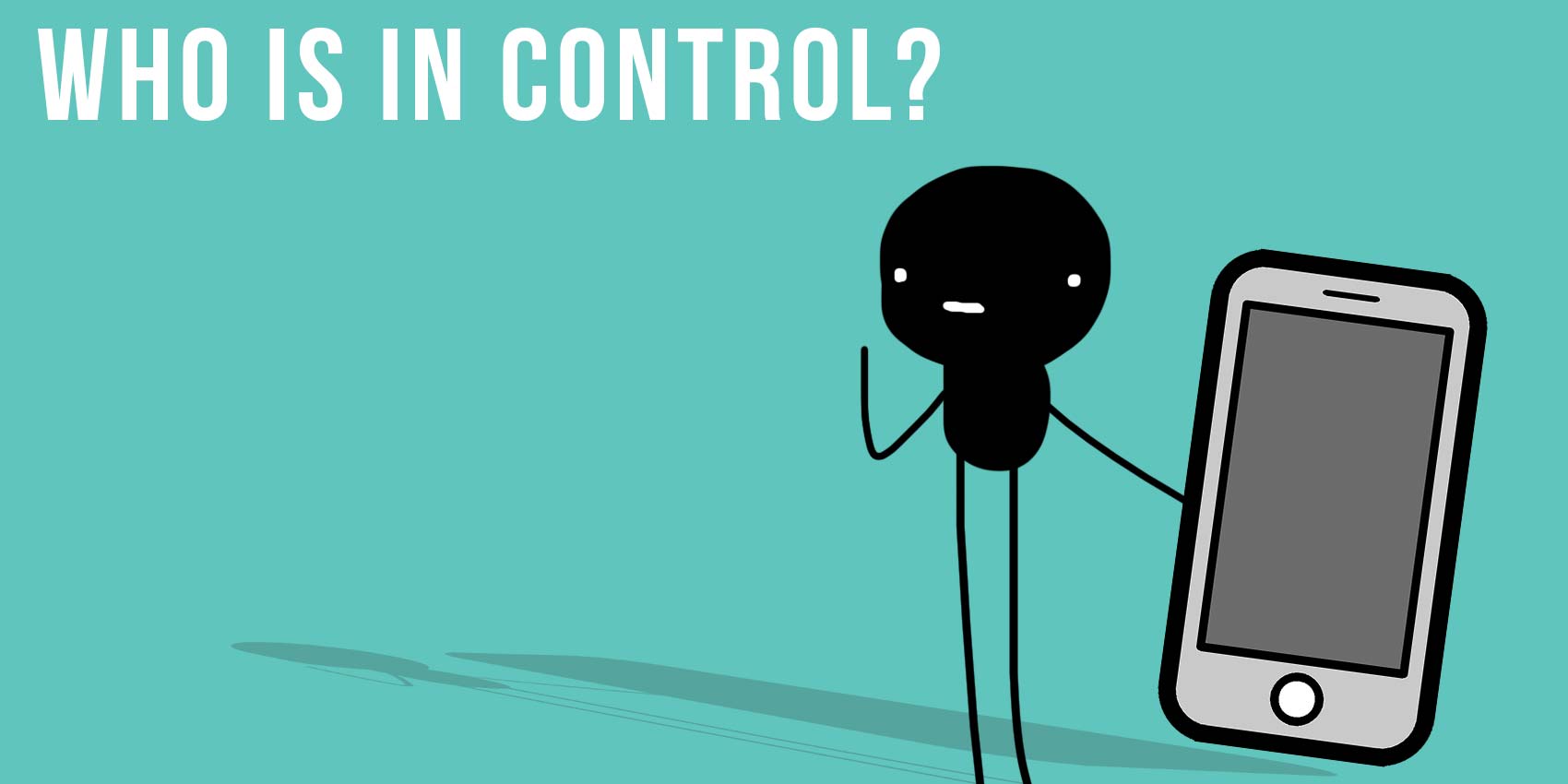22 Mar Who is in control?

Your phone, apps, internet sites, games… they are all designed with one thing in mind: how best to capture and keep your attention. They are, to be frank, designed to be addictive. Tech companies make money when they can control your attention. So they build features into phones, apps, etc., that take advantage of your brain’s impulses and drives. (They actually research what would make you stay on their apps the most.)
For instance, the brain loves novelty (new things). This is why new features are added to apps daily: your phone pings and ads move and change on screens—all of that is designed to capture your brain without you being aware of it.

DID YOU KNOW? The desire to seek what is new is called neophilia.
Even the colors of your phone are carefully constructed—those little red notification bubbles you see pop up on your apps, the ones that “alert” you to pending friend requests or new messages? They are red because red is an alarm color, motivating people to respond to it. In fact, the original notification bubbles were blue and they were essentially ineffective: people rarely responded to them.

DID YOU KNOW? Want to make your phone less appealing? Change it to grey scale. The bright colors of your phone capture your brain’s attention, whereas dull grey colors don not.
Plus, the red notifications also tap into the “variable reward” drive of your brain. What’s that? When trying to motivate behavior, rewards that are variable, meaning sometimes you get them sometimes you don’t, are the most effective in producing the wanted behavior. (For example, when a rat taps a lever and gets one pellet of food overtime the rat will tap the bar LESS than when the rat taps the bar and sometimes gets no food but sometimes gets five pellets of food.) That’s what slot machines are and why they are so addictive: sometimes you win nothing, sometimes you win big. When you tap on the little red icons, the same thing happens: sometimes you are rewarded with friend requests or likes on your post, other time it’s information your don’t care about. That’s variable reward and, like a rat or a gambling addict, it will keep you tapping your phone all day long.
Moreover, every ping from your phone releases a small dose of dopamine in your brain. Dopamine is the feel good neurotransmitter in your brain that is part of the reward pathway. In a nut shell, anything that releases dopamine in your brain is something you will be driven to do again. Activities that activate the dopamine centers can become addictive, like video games. Video games are designed to release dopamine in your brain and that is why many people are becoming addicted to them.

DID YOU KNOW? Seeing images that other people have “liked” activates the dopamine reward centers and thus teens are more likely to “like” them—even when the number of “likes” are randomly assigned (meaning made up by the researchers and not a real indication of how many people liked them).
(Source, UCLA research as reported in Mindful December 2016 page 11).
Finally, and perhaps most important, social media taps into our most basic human drive: the need to be connected to other people. Humans are deeply social, our survival in evolutionary terms depended on us being connected to other individuals. Social media capitalizes on that need. Unfortunately, it doesn’t always fulfill it in a manner that satisfies the drive. Human touch, smell and visual cues are incredibly important in assessing connection. Those are all missing from social media interactions. Plus, social media interactions tend to be more “surface” and not intimate. This can be problematic because the most satisfying relationships that people have are ones that are more emotionally intimate, where people feel deeply seen, valued and heard. That can be far more difficult to accomplish online than in person.
Wow. That was a lot of heavy stuff and may have come off as a bit frightening and perhaps anti-technology. So to close this sub-post, we want to emphasize, that technology can be good or bad, it all depends on how YOU use it. So, the BIG question to ask yourself when using social media or any digital device is: who is in control? Am I in control or are the tech companies controlling me? That’s why most experts recommend being mindful of your use. Mindless use can lead to addiction. Mindful use (use that is intentional and not mindless) can open the doors to unlimited possibilities.




Post Question:
What do you do to make sure you are mindful of your technology use?
Answer the post question here
What's being said